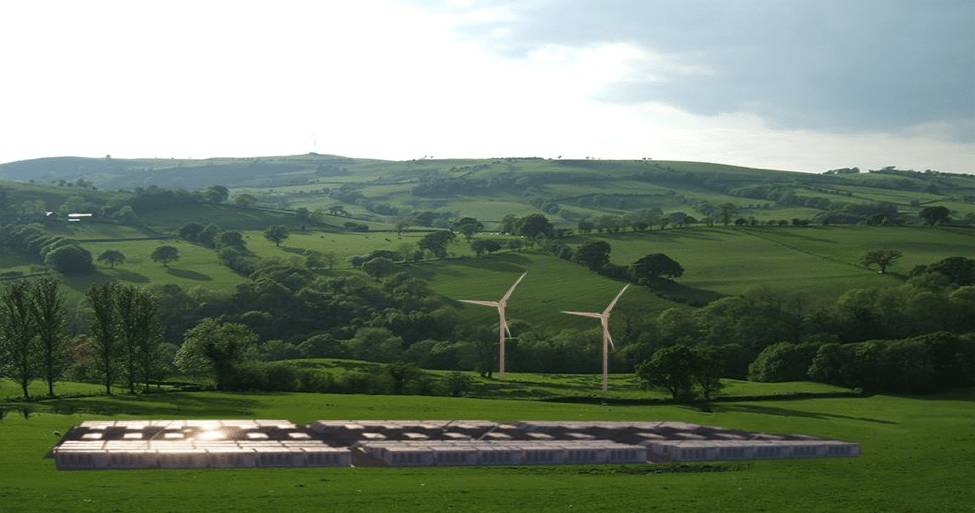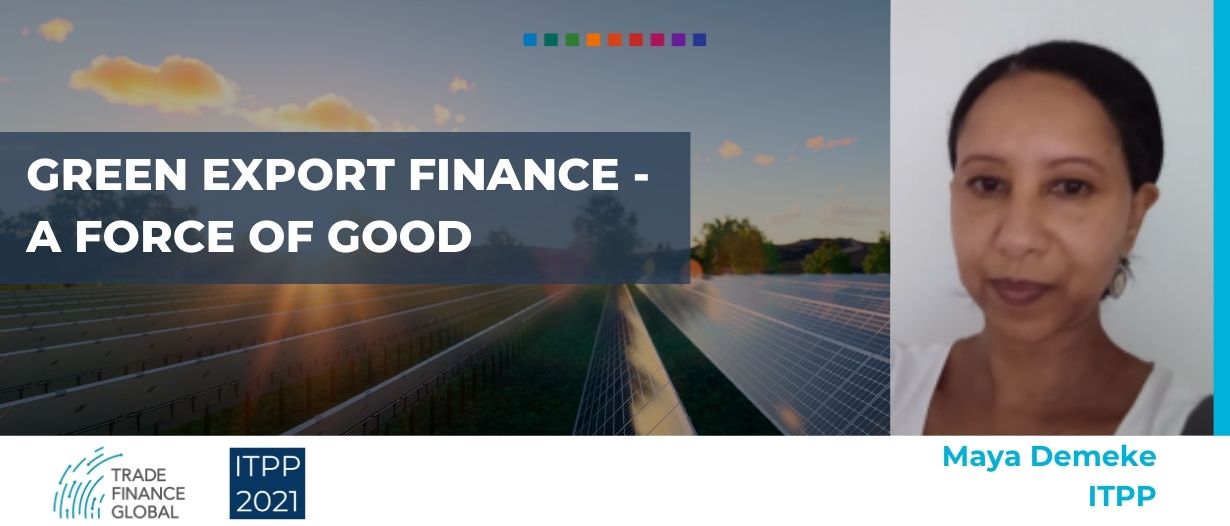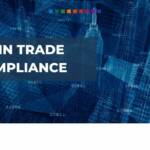Evermore relevant as a counter-cyclical lender during COVID-19, export credit agency (ECA) finance is an important contributor to sustainable development goals (SDG).
The latest IPCC report drives further urgency to ECAs’ plans to increase funding for green and sustainable deals and to rebalance portfolios with long-dated carbon-intensive assets. Success will additionally require investments to innovate export value chains.
What are ECAs?
ECAs are government agencies or private entities with a public mandate to support their exporters in accessing international markets and manage the risks associated with international trade.
These institutions provide financial products to mitigate commercial and political risk, and effectively avail competitively priced financing through direct lending, supplier, and buyer credit schemes.
It takes a ‘village’ to originate and close medium-to-long term export transactions. To this end, ECAs are increasingly collaborating with government agencies, private insurers, commercial banks, and development finance institutions.
It helps that many of the active ECAs are members of the OECD Arrangement on Officially Supported Export Credits and abide by the same set of voluntary rules to level the playing field and support productive competition. Broadly speaking, the rules relate to:
- sustainable lending
- cover for local content
- minimum premium rates
- financial terms and conditions.
These rules and sector-specific arrangements are amended periodically to remain relevant as industries and markets evolve.
How the Dutch ECA is leading the way
Atradius, the Dutch ECA, is leading the implementation of its government’s ‘Greening’ Policy with its recently launched green label methodology that will guide how it identifies, promotes, measures, and reports on its portfolio.
While targeted to align to the OECD Arrangement’s sector understanding on export credits for renewable energy, climate mitigation and adaptation and water projects, in addition to SDG #13, namely Climate Action, the green label effectively supports eleven of the seventeen goals.

Emerging and developing economies (EDE) – Growth markets for sustainable export finance
According to TXF’s new Sustainability in Export Finance report, in 2020, the largest number of sustainable export transactions were in Africa. The region was only trumped by Europe which captured the highest export values in a much smaller number of deals.
As governments in emerging and developing economies prioritize investments in health care, smart cities, clean energy, mobility, and transportation, there will be a vast demand for medium-to-long-term finance for capital investments and infrastructure projects.
This is great news for export finance networks and ECAs that are operationalizing ‘push and pull’ strategies to originate transactions and win deals for their exporters. SACE (Italy), ECIC (South Africa), and UKEF (UK) have had great success with such strategies. This year alone, UKEF has extended £1.7 billion for two new monorail lines in Cairo and €241 million to the government of Cote D’Ivoire for the design, construction, and equipping of six hospitals. UKEF additionally announced this June that it established a renewables energy, and carbon management team to boost underwriting of zero-carbon transactions.
While COVID-19 has dampened traditional deal-making channels, ECAs are still able to expand their footprint in EDEs. This can be achieved by collaborating with multilateral agencies, and intermediaries, previously not prominent in the export finance industry but who are aiming to innovate and address market failures.
The International Finance Corporation (IFC) and the Multilateral Investment Guarantee Agency (MIGA) recently announced one such initiative to boost trade finance in low-income and fragile economies that were adversely impacted by an accelerated retrenchment of trade financiers and correspondent banks during the COVID-19 pandemic. State-owned and regional banks that are assuming the role of confirming and nominated banks in export/import of agricultural products, essential commodities, pharmaceuticals, PPE, and medical equipment, can now receive up to 100% guarantee, once onboarded into the IFC’s Global Trade Finance Program.
ECAs that participate in this program, and similar initiatives championed by the African, Asian and Inter-American Development Banks, and the European Bank for Reconstruction and Development, can provide exporters with a golden opportunity to access new markets in transactions with limited downside risk. This can pay dividends over time as economies recover and prosper. A friend in need is a friend indeed.
Asset Management – A new kid on the export finance block
The Acre Impact Capital, a blended finance impact fund and advisor, is now in operation. It aims to effectively unlock well-priced export finance for credit-worthy sponsors of growth stage, climate-aligned infrastructure projects who are unable to access adequate commercial financing in local markets.
The Acre Impact Fund has already added value as an impact advisor to Investec who arranged the € 75 million commercial tranche of the landmark 600M ECA-backed financing for the construction of a 100KM railway from Takoradi port to Huni Valley in Ghana.
This tranche was backed by ECIC of South Africa, creating space for South African exporters to participate in the project while the export finance tranche of €523M was arranged by Deutsche Bank and backed by EKN and SEK of Sweden, member of the Export Finance for Future coalition formed in April 2021 to end support for fossil fuel projects.

Competition through innovation
It will take more than innovative collaborations for ECAs to green their portfolios and support their exporters in winning deals.
Oftentimes, buyers in emerging and developing markets are balancing competing demands. While cost factors prominently in procurement considerations, value-for-money evaluations can lead buyers to choose productive assets that are affordable, transformational, and innovative. Thus, innovations that hedge climate risks and support digitized economies and Industry 4.0 can position exporters to compete and win on an increasingly crowded global stage.
ECAs are well-positioned to incentivize innovations in value chains where their economies have a competitive advantage and some are doing just that.
The UKEF’s Export Development Guarantee (EDG) program has a track record of underwriting loans to support innovation and scale-up in high-value export sectors such as smart mobility, digital manufacturing, and electrification. Jaguar Land Rover and Ford received 80% cover for GBP 625 million facilities through this program to invest in electric vehicle manufacturing and exports in 2019 and 2020 respectively.
UKEF’s recently created Transition Export Development Guarantee program that will support oil and gas companies’ transition plans and the renewable energy supply chain is another great example.
ECAs from Japan, Canada, South Africa, and Australia may have an opportunity to incentivize innovations in the nascent hydrogen economy which can be transformational for the transition plans of aviation, chemicals, industry, shipping, rail, and transport companies that feature prominently in ECA finance portfolios.
Exports of innovative ICT infrastructure and solutions will transform emerging industries in markets such as Africa, whose African Union Vision 2063 prioritizes investment in communication, infrastructure and connectivity to enable resilient and innovative industry and infrastructure.
Canada’s EDC is investing in the future of telecommunications through an expanded collaboration with Nokia Canada’s R&D facility as part of its Global Corporate Partnership.
As 5G rollout plans are ironed out and the future of industrial and healthcare investments are considered, ECAs can incentivize investments, scale-ups and exports in autonomous manufacturing, 3D printing, and high-value medical equipment.
Buyer incentives
Recognizing that affordability is a competitive advantage, ECAs can explore incentives for innovation exports that support climate ambitions and the future economy.
To reduce all-in-costs for buyers/importers, ECAs can consider lowering risk premiums through risk-sharing agreements and extending favourable loan pricing, and tenors that reflect an incremental reduction in the value-at-risk of climate and future-proofed ICT-enabled solutions.
All hands on deck
There is a $2.5 trillion annual financing gap to meet SDGs, therefore, all hands are needed on deck to solve this challenge and ECA finance is one of them.
COVID-19 has constrained some markets, however, I expect EDEs to come back roaring as the export markets of the future.
With a greater focus on innovative collaborations for international trade, coupled with investments to innovate export value chains, ECAs can deliver on their dual mandate of supporting national interest and international efforts to build sustainable economies where no one is left behind.





































